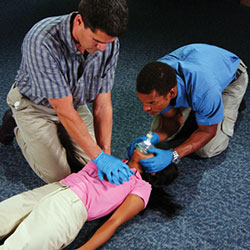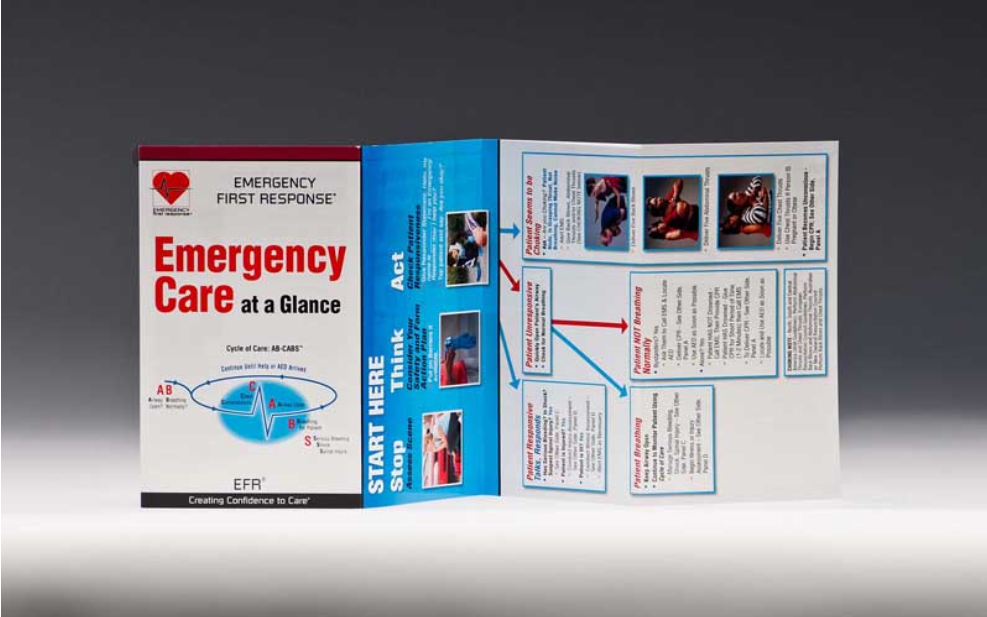Written by Megan Denny
CPR training is an essential skill for parents, carers, and a requirement for many well-paying jobs. Unfortunately:
- Nearly one-third of UK adults are not comfortable performing CPR
- Only 54 percent of Americans report knowing how to do CPR
- A random survey in Germany found 16% had never been trained and 47% had taken a class more than 20 years ago.
- In Australia, only two-thirds of adults in Australia have had CPR training
Why don’t more people know CPR?
Concerns about performing CPR incorrectly, injuring the victim, and reluctance to provide mouth-to-mouth ventilations are a few of the reasons people don’t learn how to perform CPR. In this article, we’ll address common myths and misconceptions about CPR.
Most Common CPR Myths and Misconceptions
Myth #1 You’ll be required to perform “mouth-to-mouth” on a stranger
Statistics show you are more likely to perform CPR on someone you know versus a stranger. Approximately 80 percent of cardiac arrests occur in the home.
Furthermore, International Liaison Committee on Resuscitation (ILCOR) guidelines prioritize chest compressions over mouth-to-mouth1. Studies have found performing chest compressions alone can be just as effective as chest compressions with mouth-to-mouth, provided the chest compressions are done correctly. This is known as Hands-Only CPR. That said, there are two circumstances where mouth-to-mouth ventilations may increase the chance of survival: if the victim is a child, or if the rescue is due to a drowning accident.
During an Emergency First Response© (EFR) class, you’ll practice administering mouth-to-mouth on a mannequin. Our students also learn to use barriers (pocket masks) to practice safe and effective delivery of rescue breaths.
Myth #2 CPR is difficult
CPR, like other physical skills, can be easily mastered with sufficient hands-on training and practice. How easy? A recent study found 86 percent of children ages 9-18 could correctly perform CPR after receiving hands-on training.
The steps are fairly simple, however, you cannot learn how to perform CPR effectively by watching a video. In a hands-on class, you’ll use a CPR training mannequin to learn exactly where and how hard you need to press to provide effective chest compressions.
For those who are reluctant to learn CPR for fear of “doing it wrong,” or causing physical harm to the victim, remember that CPR is designed for someone who isn’t breathing and doesn’t have a heartbeat. They are clinically dead1, you cannot make their condition worse. As a bystander, the only wrong thing you could do is nothing at all.
Myth #3 Performing CPR won’t make a difference
CPR stands for cardiopulmonary resuscitation, more specifically, the act of pumping blood to the brain in an unresponsive victim. When the heart stops, brain tissue starts to die within three minutes. Unfortunately, the average emergency response time is seven minutes or longer:
Average Ambulance Response Times
When every second counts, CPR can make a difference. Performing CPR can, in some cases, double a victim’s chances of survival.
Myth #4 My friends and family are healthy, I don’t need to know CPR
CPR can save the life of someone who is not breathing and has no heartbeat due to asphyxiation, cardiac arrest, drowning, electrocution, or a heart attack. Even if you and your loved ones are in good health, accidents do happen.
In an internationally-accredited EFR CPR course you’ll learn how to:
- Evaluate a victim’s condition and determine whether they need CPR
- Calmly respond in an emergency
- Use an Automatic Electronic Defibrillator (AED)
Myth #5 I can learn CPR by watching a video online
The only way to learn CPR properly is through hands-on skill practice. If you truly want to learn how to save a life, find an in-person class with an experienced CPR Instructor.
In an EFR CPR class you’ll gain the confidence and skills to respond in an emergency. You’ll practice real-world scenarios and your instructor will answer any questions and address any concerns you may have. Learn more about CPR certification from EFR, view our accreditations, or find a CPR Instructor near you.
References:
1https://depts.washington.edu/learncpr/askdoctor.html#Can%20I%20kill




